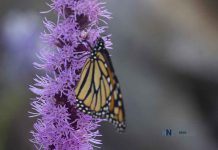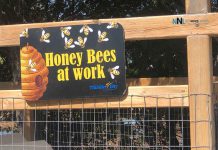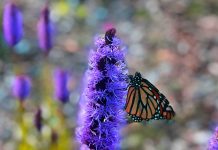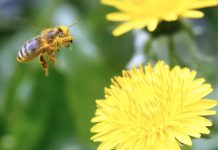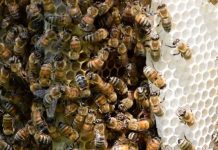

THUNDER BAY – TECH – Declining bee populations are a serious issue that is related to a number of factors. Climate change, and the use of chemicals in the environment are two factors that are impacting wild bees and domesticated bees.
It may sound counter-intuitive, but crushing up bees into a ‘DNA soup’ could help conservationists understand and even reverse their decline – according to University of East Anglia scientists.
Bee Soup a solution
Research published today in the journal Methods in Ecology and Evolution shows that collecting wild bees, extracting their DNA, and directly reading the DNA of the resultant ‘soup’ could finally make large-scale bee monitoring programmes feasible.
This would allow conservationists to detect where and when bee species are being lost, and importantly, whether conservation interventions are working.
The UK’s National Pollinator Strategy plans a large-scale bee monitoring programme. Traditional monitoring involves pinning individual bees and identifying them under a microscope. But the number of bees needed to track populations reliably over the whole country makes traditional methods infeasible.
This new research shows how the process could become quicker, cheaper and more accurate.
Researchers from UEA worked in partnership with Conservation Grade and the University of Reading in the UK, and the Kunming Institute of Zoology and the China National GeneBank at BGI-Shenzhen in China.

Lead researcher Prof. Douglas Yu, from UEA’s School of Biology, said: “Wild bees play a key role in pollinating wild plants and cultivated crops – maintaining both biodiversity and food production. They are however threatened by habitat loss, pesticides, climate change and disease. Safeguarding wild bee populations and their pollination services is therefore a top priority.
“Developing an efficient long-term monitoring programme to better understand the causes of their decline is one of the goals of DEFRA’s National Pollinator Strategy. This will involve a massive collection of bees across the UK. Traditionally they would be pinned and identified under a microscope, but this is so labour-intensive and error-prone that the resulting data might not be available for years after the collections.
“We need more efficient identification methods if we are to improve our understanding of bee populations and their responses to conservation interventions. The big challenge is that there are hundreds of wild bee species per country, almost 300 in the UK alone. Even with the necessary expertise, it would be impossibly time-consuming to count and identify all the bees in each location – which is where the ‘soup’ comes in.”
The research team took samples of bees from different locations in the Chilterns, the Hampshire Downs and Low Weald. A total of 204 bees were extracted, and the resulting soups put through a DNA sequencer.
Measuring Bee DNA
The scientists then used a computer program to map the raw DNA reads against the genomes of bee mitochondria, which are found in nearly every animal cell. Each bee species has a distinct genome, allowing the team to identify which species of bees had been present in each sample.
The process did not require taxonomic experts and still proved to be more accurate. Also, by skipping the DNA-amplification step known as PCR, the method was able to estimate the biomass contributed by each species, which opens the way to tracking population trajectories.
Prof. Yu said: “The number of bees that end up in one of my soups is absolutely tiny compared with the populations being studied.
“At present, bees are collected and monitored using traditional methods, which are slow, expensive, and there is a lot more room for error.
“A computer programme doesn’t have an opinion. It is or it isn’t a Bombus lucorum bumblebee, and all the evidence supporting an identification is publicly available.
“Insect soup is a sensitive thermometer for the state of nature. And large-scale bee monitoring programmes would really benefit from this type of DNA sequencing. The method can easily be scaled up to track more species, like the 1000 or so total pollinating insects in the UK.
“We can find out where species diversity or abundance is highest – for example in the countryside or in city parks- and how species diversity is affected by farming methods – for example, to see if habitat set-asides support more bees.
“Species biodiversity at any given site can be revealed in a single drop of soup. It’s a technique that shaves weeks, months, years off traditional ecological methods, saves money and spares the need for tons of taxonomic expertise.
“We’re trying to speed up ecological investigation on a monumental scale.”

